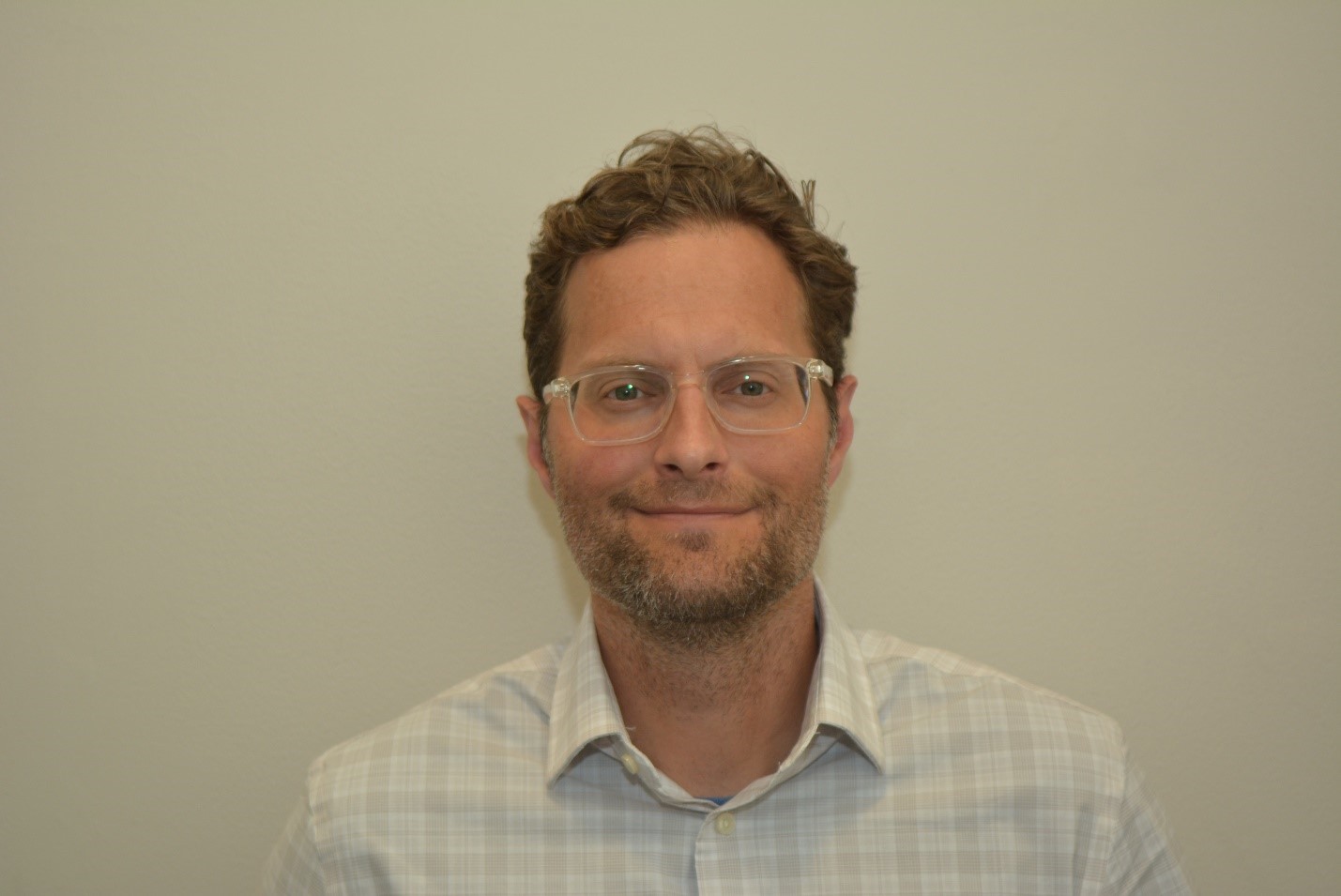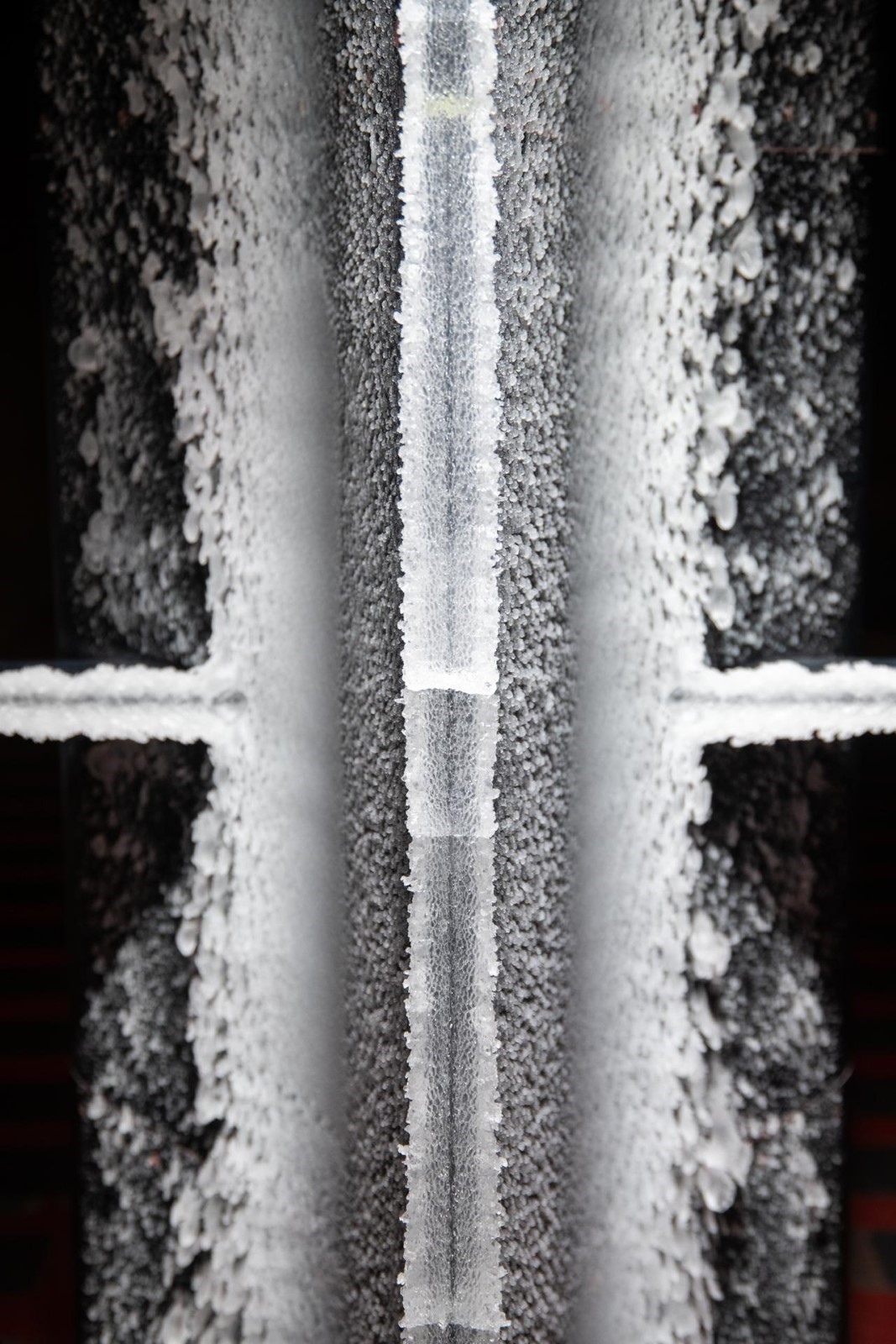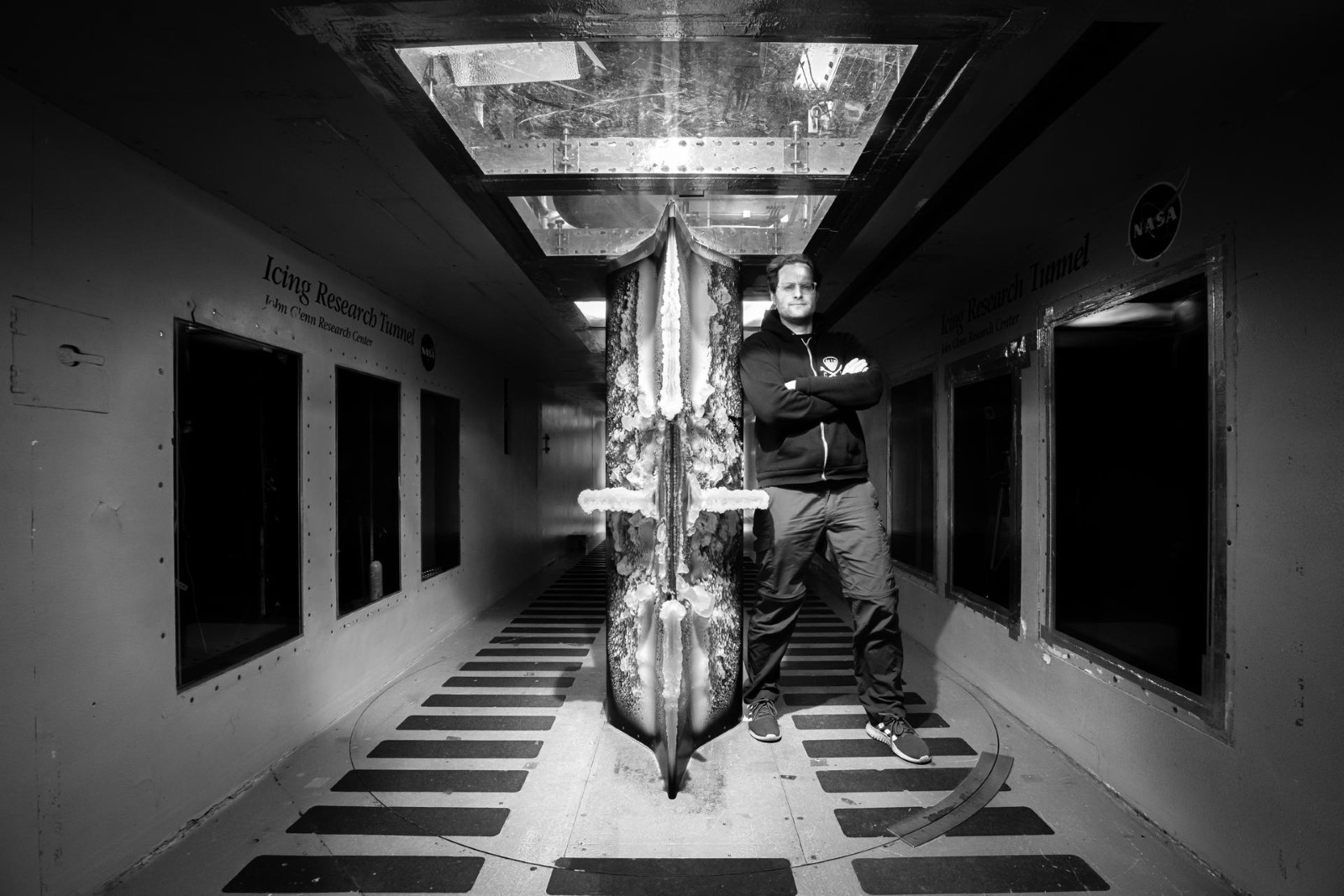Dr. Tadas Bartkus is senior researcher at the Ohio Aerospace Institute (OAI), wholly affiliated with Parallax Advanced Research. He received his bachelor’s, master’s, and doctoral degrees in mechanical engineering from Case Western Reserve University in Cleveland, Ohio. He is contracted with NASA and has been researching the fundamental physics of jet engine icing since 2014, with the aim of improving flight safety. He is also a member of the NASA Glenn Research Center Icing Branch. The Parallax/OAI MarCom team interviewed Dr. Bartkus about his career journey and current and upcoming research projects.

INTRODUCTION AND BACKROUND:
Q: Can you share an overview of your role and focus within the field of aircraft icing?
[Tadas Bartkus]: In general, we work to make flying safer. Adverse weather can generate ice on critical surfaces on the exterior of the aircraft and even inside the engines. For example, supercooled liquid coming in contact with the airframe and freezing on impact could add weight, increase drag, and reduce lift. In cruising altitude, encountering ice crystal clouds that reach the jet engine compressor can cause melting and re-freezing that, in turn, force the engine to lose power or result in engine damage. To better understand the detrimental nature of icing and develop models to predict its effect on aircraft, we need to emulate the conditions within a well-controlled and repeatable environment. To address this need, NASA Glenn built a unique icing wind tunnel over 80 years ago in Cleveland, which still operates today. We utilize the facility to conduct experiments to gather data and evaluate the fundamental physics of icing. Next, we develop and validate physics-based models using the observations and collected data. These models are eventually employed by industry to help develop and certify new or modified aircraft designs. While engine icing has been my focus recently, I've also spent time working on certain aspects of airframe icing. Overall, aircraft icing is an international effort, with partners all over the world, due to its importance to safety as we all work together to better understand the physics behind these issues and mitigate them, so that crashes and fatalities can be avoided.

Caption: Ice accreted on the SIDRM test article under a supercooled liquid cloud. Photographer: NASA/GRC/Jordan Salkin

Caption: Dr. Bartkus on the NASA icing project. Photographer: NASA/GRC/Jordan Salkin
Q: What sparked your interest in studying the physics of aircraft and engine icing?
[Tadas Bartkus]: As I enter the NASA Glenn Research Center campus, the very first thing I see each day is a sign that reads “Research and technology for the benefit of all,” and that is what initially sparked my interest in this arena, and it still continues to motivate my efforts. This work benefits everyone’s safety as they fly commercially around the world. On the other hand, we also have world-class facilities and cutting-edge technologies here at NASA, and these toys are quite fun to play with. From a technical perspective it is an intellectually satisfying challenge working with my colleagues to solve what may seem like difficult-to-answer questions.
Q: Can you share a memorable or defining moment in your career that has shaped your approach to research and innovation in aircraft or engine icing?
[Tadas Bartkus]: Ten years ago, one of my first projects was to write a numerical model that simulates the thermal interaction between the spray cloud and the flowing air inside of the icing wind tunnel. Within these wind tunnels, we have an array of spray nozzles upstream that produce the icing cloud that flows downstream towards the section where our test article is located. We know the initial conditions, such as the air and water temperature, pressure, and humidity before we turn on the icing cloud spray. However, once the spray is activated there is a complex thermodynamic interaction that occurs. I wrote a numerical model based on the first principles of mass, momentum, and energy conservation that predicted the properties of the icing cloud and air at the test section. It has allowed us to zero in on the initial conditions to get the desired conditions at the test section. When we measured the air temperature at the test section, for example, and compared it with my model, it was pretty close. It was a eureka moment for me, proving that science works. It has since been used by NASA and others in academia and industry who study icing. It is cool knowing that there's something that I developed making a continuous impact. Because of this, I recognized the importance of collaboration in terms of experiment and computation, and the effort required in gathering quality test data.
RESEARCH CONTRIBUTIONS:
Q: Your recent paper, Icing Physics Studies Using the 3D SIDRM Test Article, focuses on aerodynamic and supercooled liquid icing analysis. Could you elaborate on the key findings of this research?
[Tadas Bartkus]: This is the first paper in what is going to be a series of three - the second of which to be published in July. It describes a large multi-week testing effort in one of our icing facilities here at NASA Glenn. The journey began many years ago when we ran tests with a full-scale engine in one of our icing facilities. We probed the engine with cameras, temperature and pressure-measuring instruments, gathering important data from it. However, we could not get inside to weigh or measure the accreted ice and get all the quantitative data we desired. So, for our next test entry we designed a test article with simplified features of a jet engine compressor, with representative 3D geometry and surfaces we can heat, but without any rotating parts. Because of this simplified model, we were able to access the accreted ice and investigate it more closely. We gathered supercooled liquid icing data as a first step. We then incremented the level of difficulty and conducted tests where an ice crystal cloud accreted on the heated surfaces of the test article. This marked the first time we successfully conducted ice accretion tests utilizing a simplified test article that was exposed to an ice crystal cloud, and we happen to recreate some icing features we observed in the full-scale engine icing tests. We are providing these data and findings in the next AIAA conference, which is attended by an international audience.
Q: Who is your client for the tests you're doing, and what are the novel solutions that you provide the client?
[Tadas Bartkus]: Our client is NASA. We gather and interpret this data, develop these models, and send them to modelers that utilize it to validate their computational models. These computational tools will eventually be utilized by industry. It is a multi-layered structure with the outer-layer client being Mr. And Mrs. Air Traveler. Ultimately, they are the end users and the ones that demand safety, rightfully so.
Q: What are the most pressing challenges currently facing the field of aircraft icing and how do your contributions address these challenges?
[Tadas Bartkus]: There are two parts to this. The first challenge being that new designs require certification from the FAA (the regulators). For example, if there is a new and novel engine design focused on efficiency, you must show that it will operate safely in adverse weather conditions. Are the expenses associated with building and then testing it worth proving that it is safe? What if it fails? This is where we come into play. We're running these icing tests to build from these fundamentals and ultimately develop these tools that industry can then utilize, upfront, so they can account for icing in their design and avoid some of these costs and risks. Separately, there is the emerging Advanced Air Mobility (AAM) space with its own set of challenges. Here you have a drone, for example, with several rotating surfaces and a geometric configuration vastly different from the classical tube-and-wing of commercial jets, posing several new challenges. In addition, these are typically smaller in size and any additional hardware that could be used to address icing safety issues is a weight penalty. These will require creative solutions, and we hope our testing efforts and computational tools can help answer these difficult questions.
Q: What are your upcoming research goals or projects? Are there any new avenues or technologies you plan to explore, and are there clients you want to target?
[Tadas Bartkus]: We are looking at conducting engine fan icing tests, which is when supercool liquid impacts and freezes on the fan that resides at the very inlet of a jet engine. There are many issues with ice accreting on the fan, one of which is its shedding which can result in severe rotating imbalance issues. There are new designs, which are what we call the “open rotor” or “open fan” designs, that are theoretically 25% more fuel efficient than current engines. We are looking at conducting icing tests on the rotating machinery of these designs, to better understand the physics and impacts of icing. We've held initial discussions with the FAA, engine manufacturers, and airframers so that we could start developing our technical and research requirements, as we want to make sure that our efforts and those of industry and regulators are aligned.
PERSONAL INSIGHTS:
Q: What guiding principles or philosophies shape your decision-making process when selecting research topics or methodologies?
[Tadas Bartkus]: What drew me into this field was how it benefits the safety of civilian air travel. I am drawn more towards projects with civilian applications. In addition to safety, some projects that we work on improve fuel efficiency, so they not only help the bottom line for industry, but it benefits everyone else as well. If aircraft are more fuel efficient, less pollutants are produced, fewer greenhouse gases are exhausted, and as we know these environmental consequences affect us all.
Q: What advice would you give to aspiring researchers or engineers looking to specialize in the field of aerospace engineering, particularly in aircraft icing?
[Tadas Bartkus]: While as an engineer, you must be thorough, rigorous, and disciplined with your technical skills, you must also hone your communication skills. We do a lot of great work, but what good can it do without proper communication? Presenting at conferences and communicating what you have learned are very critical skills to have. In addition, it is important to have the ability to work as a team member. Most projects require a team effort, some of these teams consist of dozens of people, because of the complexity of problems engineers are working to solve. No one person can handle all of it. Every technician, engineer, and researcher have knowledge to share that will help you in your efforts. Finally, do your homework and always come prepared.
###
About Parallax Advanced Research & the Ohio Aerospace Institute
Parallax Advanced Research is a 501(c)(3) private nonprofit research institute that tackles global challenges through strategic partnerships with government, industry, and academia. It accelerates innovation, addresses critical global issues, and develops groundbreaking ideas with its partners. With offices in Ohio and Virginia, Parallax aims to deliver new solutions and speed them to market. In 2023, Parallax and the Ohio Aerospace Institute formed a collaborative affiliation to drive innovation and technological advancements in Ohio and for the nation. The Ohio Aerospace Institute plays a pivotal role in advancing the aerospace industry in Ohio and the nation by fostering collaborations between universities, aerospace industries, and government organizations, and managing aerospace research, education, and workforce development projects.
